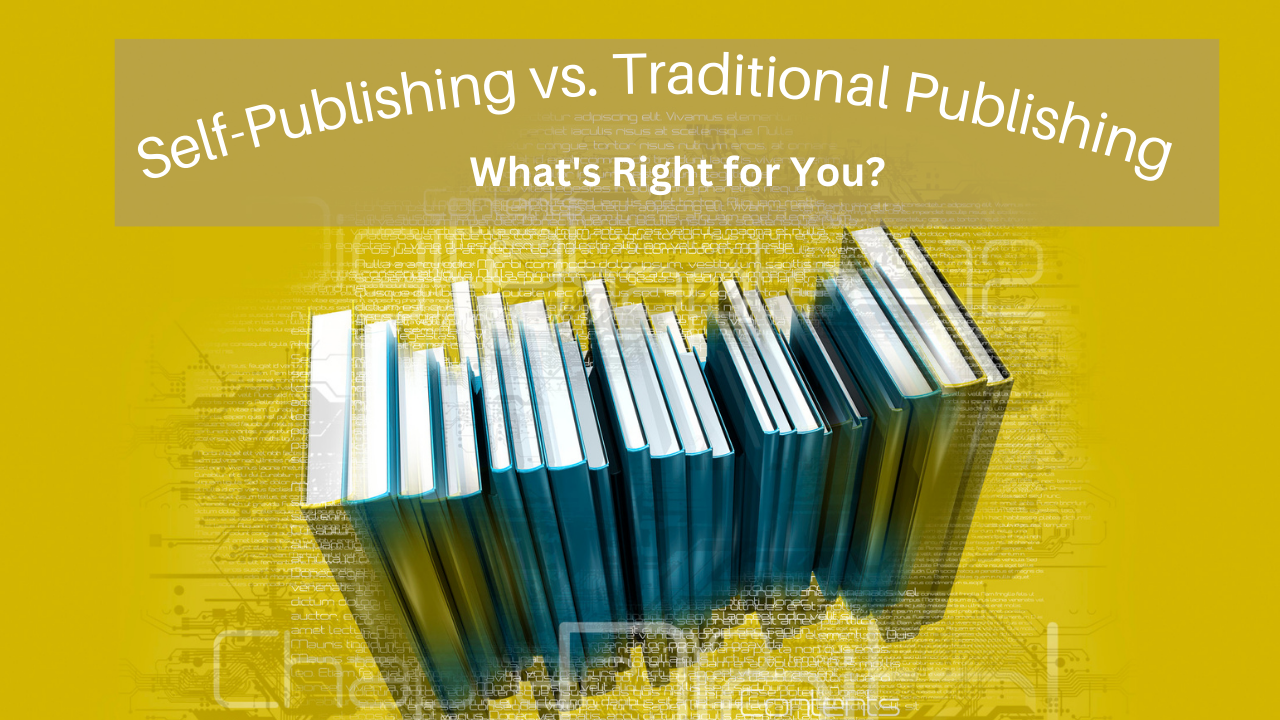Introduction
For many aspiring authors, the decision of whether to self-publish or pursue traditional publishing can be a daunting one. Both options have their own advantages and disadvantages, and the choice ultimately depends on the goals, resources, and preferences of the individual author. In this blog post, we’ll explore the pros and cons of self-publishing and traditional publishing, and provide some guidance to help you determine which route may be the best fit for you.
Self-Publishing
Self-publishing has become an increasingly popular option for authors in recent years, thanks in part to the rise of digital publishing platforms like Amazon’s Kindle Direct Publishing and Barnes & Noble’s Nook Press. One of the biggest advantages of self-publishing is the level of control it gives authors over their work. They can choose their own cover design, formatting, and pricing, and make changes to their book as needed. Self-publishing also allows for a faster turnaround time from manuscript to publication, and authors can earn a higher percentage of royalties per book sold.
However, self-publishing does require authors to take on more of the responsibilities typically handled by traditional publishers, such as editing, marketing, and distribution. This can be a significant investment of time and money, and may not be feasible for all authors. Additionally, self-published books may not carry the same level of prestige as traditionally published books, which can impact sales and readership.
Traditional Publishing
Traditional publishing involves authors submitting their manuscript to a publishing house or literary agent for consideration. If accepted, the publisher takes on the responsibilities of editing, designing, printing, and distributing the book. One of the biggest advantages of traditional publishing is the prestige and credibility it offers. Books published by traditional publishers are more likely to be reviewed by major media outlets and considered for prestigious literary prizes.
However, traditional publishing can also be a highly selective process, with many manuscripts being rejected before finding a home. Even if accepted, authors may have less control over the final product, including cover design and pricing. Traditional publishing also typically offers lower royalty percentages to authors, and can involve a longer turnaround time from manuscript to publication.
Hybrid Publishing
For some authors, a hybrid approach may be the best fit. This involves working with a company that offers a mix of traditional and self-publishing services, allowing authors to retain more control over their work while still benefiting from professional editing, design, and distribution support. Hybrid publishing can also offer a greater level of flexibility in terms of pricing and marketing strategies.
Conclusion
In the end, the decision of whether to self-publish or pursue traditional publishing (or a hybrid approach) depends on a variety of factors, including the author’s goals, resources, and preferences. Each option has its own set of advantages and disadvantages, and there is no one-size-fits-all answer. By carefully considering the pros and cons of each route and exploring all available options, authors can make an informed decision that best aligns with their unique needs and aspirations.


No responses yet